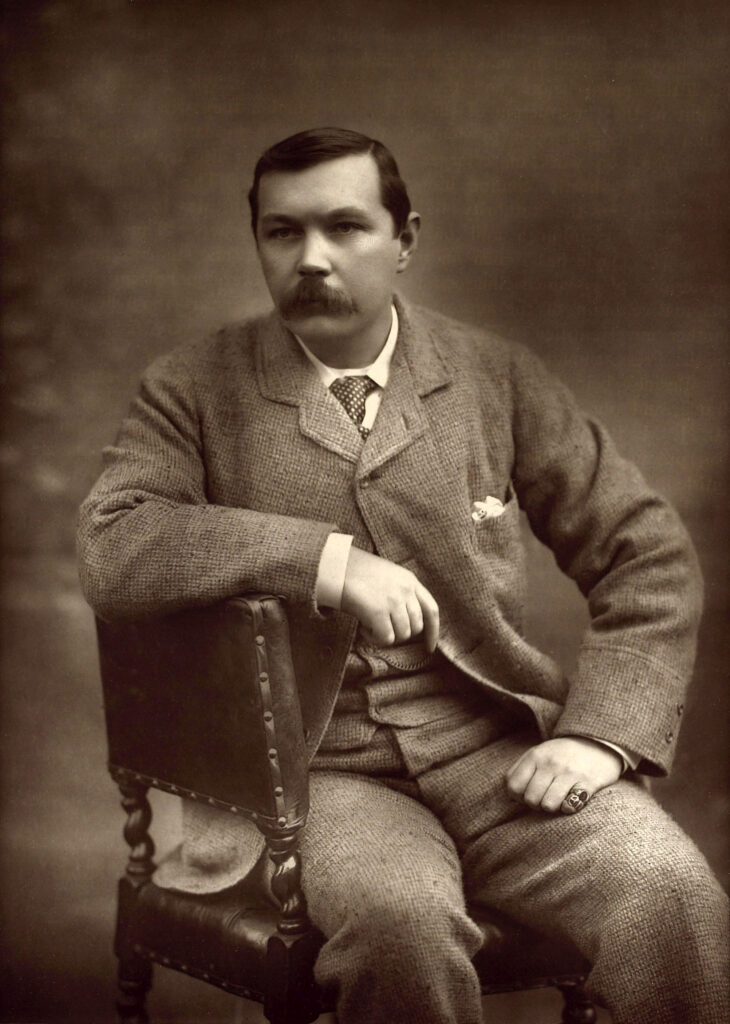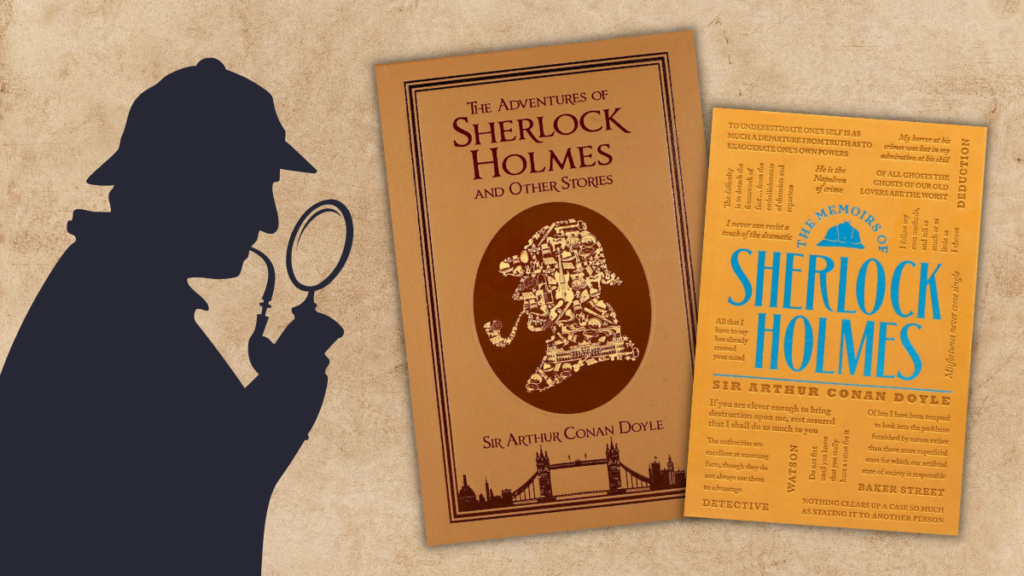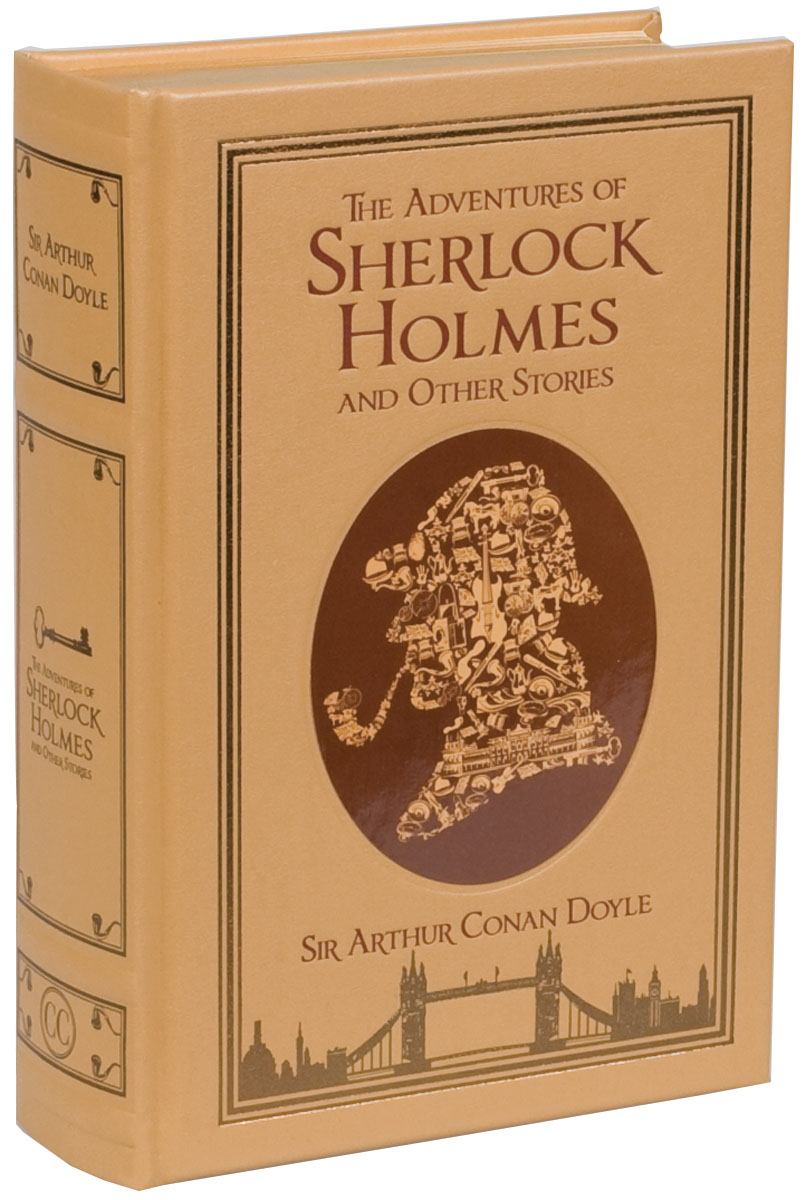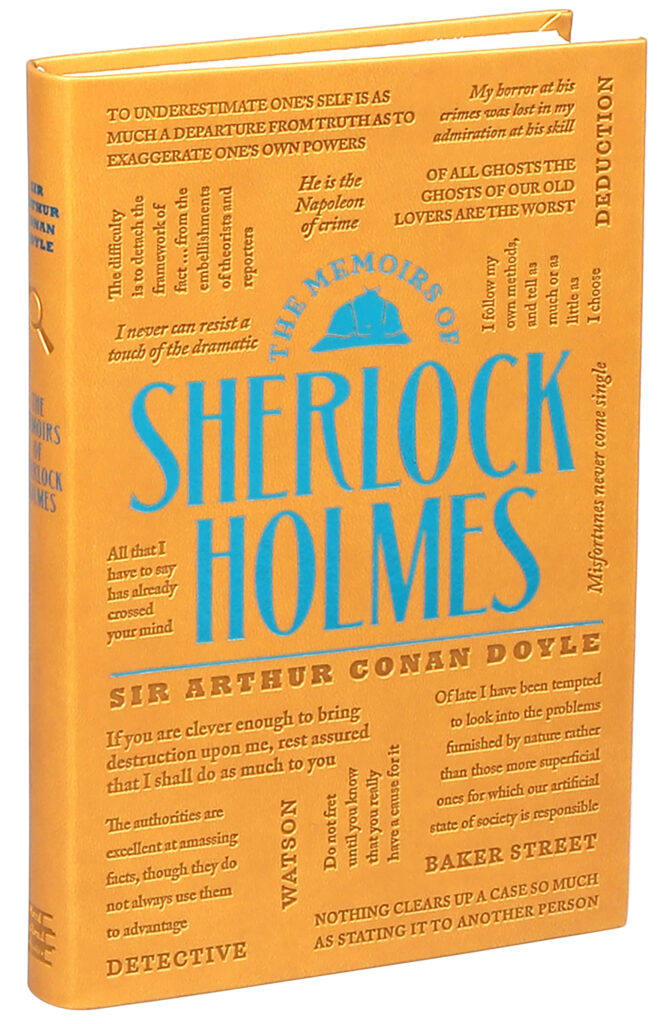By Brian Boone
He’s one of literature’s greatest characters, conceived by one of the English language’s
most popular and enduring authors. And Canterbury Classics has him for you in Word Cloud and Leather-Bound editions! You should definitely get your hands on copies, but before you do that, grab your houndstooth caps and magnifying glasses and learn these 6 facts about Sherlock Holmes and Sir Arthur Conan Doyle.
1. Arthur Conan Doyle worked as an eye doctor in London in the late 19th century and wrote as a hobby, but Victorian England offered so many popular periodicals that he found he could make far more money as a short story writer than as an ophthalmologist. After making a nice living with various stories, he published A Study in Scarlet in 1887 which introduced the characters of detective Sherlock Holmes and his forever baffled best friend and assistant (and the stories’ narrator) Dr. John Watson.

Try more sleuthing with our Leather-Bound Classic!
2. A Study in Scarlet flopped, as did Doyle’s next Sherlock novel The Sign of the Four. Sherlock works only took off when Doyle made them more accessible and less expensive by offering them as short stories in The Strand, a literary magazine, in 1891.
3. The 2000s TV series House utilized a medical mystery format, with the irascible
genius Dr. House solving a diagnostic puzzle each episode. Creator David Shore based
the character of Dr. House on Sherlock Holmes (house = homes = Holmes; get it?),
while Doyle actually based his detective character on a doctor he knew named Joseph
Bell, a very smart guy with a knack for noticing extremely minor and revealing details.
4. A Study in Scarlet was published for a Christmas magazine, and it didn’t garner much
attention. Nor did The Sign of the Four, which added to the mix the Baker Street Irregulars, the street hooligans who act as informants and errand boys for Holmes and Watson.
5. It’s common knowledge that Sherlock’s unique style of solving mysteries — absorbing
hundreds of details and then narrowing down the possibilities — is an example of
deduction, or deductive reasoning. It’s not true, however. Sherlock technically employs
abductive reasoning, in which evidence and observation are considered, along with
external data, to create a narrative of the crime and a theory as to the motive.
6. Despite his success, Doyle grew tired of churning out Sherlock stories and in 1891
published an epic war novel called The White Company. It flopped; readers wanted the
detective stories. Largely out of spite, Holmes followed up the war book with The Memoirs of Sherlock Holmes featuring a story called “The Final Problem,” in which Sherlock dies. Public sentiment was so vicious and negative (and sales of his latter works so low) that Doyle returned to the world of Sherlock in 1899, claiming that any new stories took place before his character died.
Want to delve more into the mysterious and mystery-solving world of Sherlock
Holmes? It’s elementary to check out our Word Cloud Classics edition of The Adventures of Sherlock Holmes.










